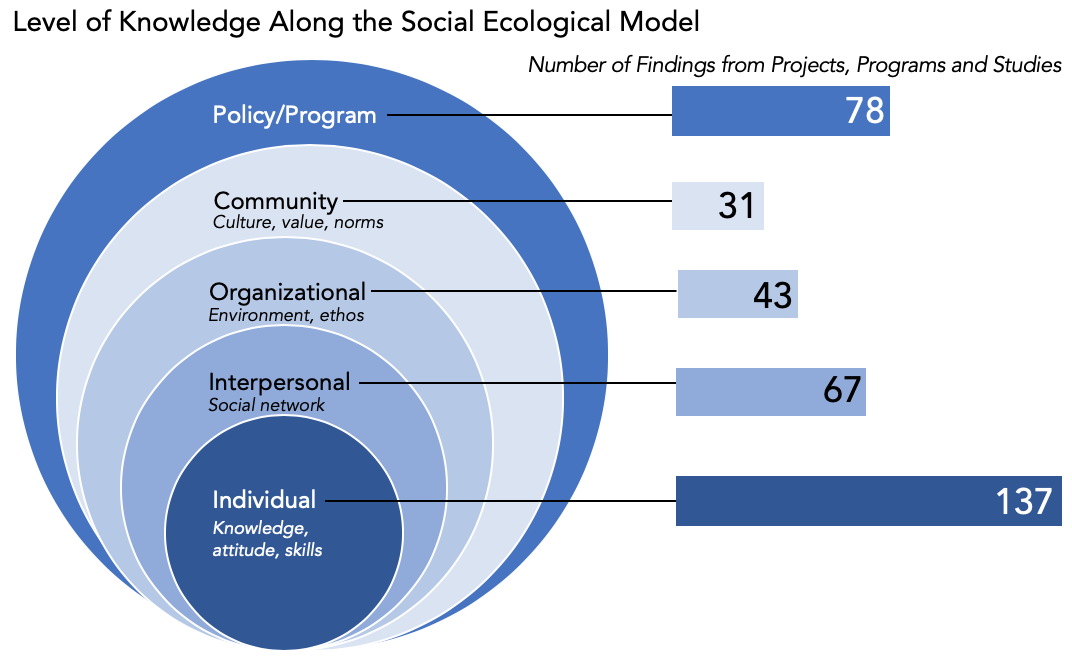July 1, 2019
A new report, What we know and don’t know about adolescent girls and young women and HIV prevention in sub-Saharan Africa: Mapping findings across completed, ongoing and planned projects, analyzes data from 49 projects in 20 countries to identify steps that will advance HIV prevention awareness, uptake and adherence by adolescent girls and young women (AGYW). Among the findings is the existence of a robust body of knowledge that explores young women’s attitudes about HIV prevention. But the field knows far less about the effect of communities on attitudes and behaviors related to prevention, even though that support is thought to be crucial to the uptake of HIV prevention. These and other findings in the report can inform implementers and policy makers now, and they also point to where more research is needed.
Adolescent girls and young women (AGYW) comprise the majority of new HIV infections in sub-Saharan Africa. According to UNAIDS, young women between the ages of 15 and 24 in sub-Saharan Africa are twice as likely to be living with HIV than young men of the same age, and 75 percent of all new infections in 15- to 19-year-olds are found in AGYW. Responding to the needs of AGYW is critical to ending the epidemic in the region. Many programs have implemented HIV prevention interventions aimed at AGYW, with varying success, as they confront the unique challenges, concerns and vulnerabilities faced by AGYW.
Oral PrEP is one such HIV prevention option, which is US FDA-approved, WHO-recommended, and demonstrated to be very effective in research studies. But, in many settings, implementers have faced challenges rolling out PrEP, a reminder that the efficacy of a product alone is not a predictor of real-world success. When people do not like a product, face structural or social barriers to accessing it, or have difficulty incorporating it into their daily lives—and thus don’t use it—efficacy by itself cannot overcome that.
So, what do AGYW need and want from a prevention product or program? What program features or social factors will galvanize them to use a product or participate in a program, continue with that intervention and ultimately champion it with their peers and communities? The report, produced by the the HIV Prevention Market Manager and Clinton Health Access Initiative (CHAI) and funded by the Bill & Melinda Gates Foundation, explores these questions, drawing from 49 projects focusing on AGYW in sub-Saharan Africa, for which HIV prevention is a primary objective. It examines 308 individual key findings reported by these projects to highlight what approaches have worked best and why, and where data gaps exist in the field. (Through the HIV Prevention Market Manager, AVAC has also undertaken human-centered design research in South Africa to better understand the factors that encourage or discourage AGYW’s engagement with HIV prevention.)
The report’s analysis maps the findings along two continuums, the social ecological model and behavior change framework. The number of findings along either of these continuum point to stronger or weaker areas of knowledge in the field. For instance, most findings focus on the individual and the initial “awareness” stage of behavior change, an indication that many AGYW are not yet using prevention methods and fewer have begun championing them with others.
